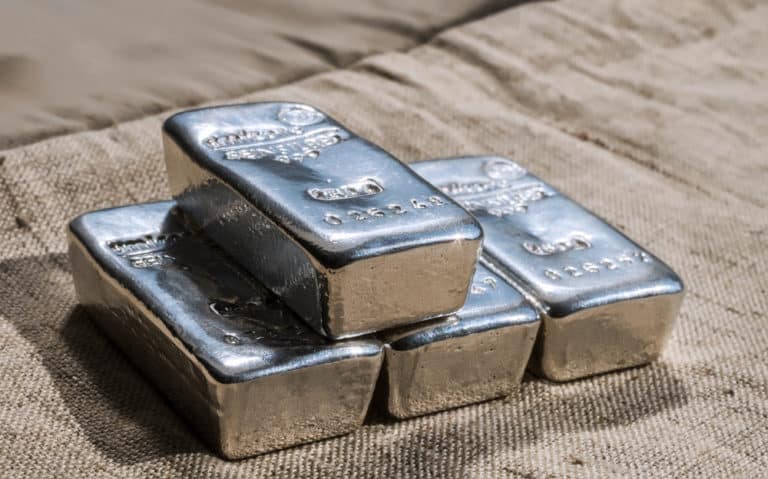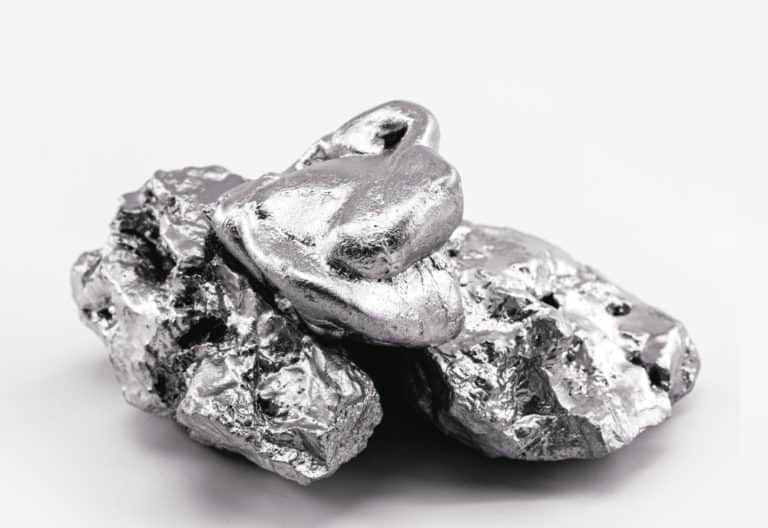
Do some of your coins stick out like a sore thumb from your collection of silver coins? If you don’t care about losing your coin’s numismatic value, you have tons of options to clean your silver coins! From mild cleaning to harsh chemical methods, you can always get back that silver shine. In this article, we focus on restoring your silver coins. If you want to remove dirt, grime, grease, or tarnishing, keep reading!
While there’s a lot of controversy in cleaning coins, this article will help you make an informed decision when cleaning your silver coins. Use the table of contents to jump to your question. If you would like to keep your coin “sellable” even after cleaning it, please read the section on Before You Clean Your Silver Coins.
Before You Clean Your Silver Coins

Here are two critical things to consider before cleaning your silver.
Cleaning Does Not Increase Coin Value
If you want to clean your coin to improve its appeal, no problem! But that’s about it for cleaning coins. Cleaning your silver coins will not increase their value in any way. Though, of course, you can always charge as much as someone is willing to pay.
Silver Toning Could Increase Your Coin’s Grade
Coin collectors love their patina! In any case, why would an antique coin look brand new? The toned color forms as silver reacts with sulfur and oxygen over time. It’s a natural and accepted quality.
If you ever want to slab your coin in the future, natural toning will be an advantage.
But if all you want is the silver shine back on your coins, I got you. You can get the shine with minimal damage.
To maintain your silver coin’s natural appeal, here are some things to keep in mind when cleaning. Who knows, your inheritors may want to sell your coins.
- Avoid brushing. If you have to brush: use the softest brush and the least force.
- Avoid scratches as best as you can. Don’t rub your coin against any rough materials.
- Whenever you can, use only distilled water to clean your coins. Tap water has chlorine and other minerals which leave behind spots.
- Handle your coins with gloves to avoid fingerprints. It will be difficult to remove finger marks without adding scratch marks.
- Dipping almost always reduces the mint luster (the reflective part). Once it’s gone, there’s no getting it again.
- Whenever you can, first experiment the cleaning process on a low-value coin.
Let’s move on to ways to clean your silver coins.
1. Using Water To Remove Dirt
Water removes dirt without leaving behind any scratches. It’s the least harmful means to clean dirt from your silver coins.
You will need running water, distilled water, and a soft cloth or hairdryer.
- First, soak your coins in water for a few minutes. It will loosen hard dirt particles.
- Then, flush the coin with running water. Running water breaks away the dirt particles.
- Rinse your coin in distilled water.
- Pat your coins dry with a soft cloth (cotton or microfiber).
- Alternatively, blow-dry your coin.
2. Using Soap To Remove Grease

If your coin has greasy residue, the US Mint approves using a mild soap. Please note that acidic detergents will remove the mint luster beneath the dirt.
- Put a mild soap (one that’s mild on the skin) in a bowl.
- Add warm water.
- Soak your coin in the water for some hours or overnight. It depends on the grease amount. Add a pinch of salt to break apart dirt particles faster.
- Keep moving the coin in the solution. You could rub gently with your gloved fingers.
- Then, remove your coin from the solution and rinse with distilled water.
- Rinse your coins intensely to remove any detergent residue.
If you soak more than one coin, ensure that none lies on top of the other. It’s best to suspend the coins in the solution such that every side is exposed to the mixture.
3. Using Baking Soda To Remove Grime
Baking soda (sodium bicarbonate) is abrasive. This means that if you rub your coin with baking soda, you may leave scratch marks.
You will need a bowl (or any container), aluminum foil, hot water, distilled water, and baking soda (with tiny granules).
- Wrap your bowl with aluminum foil.
- Pour in some baking soda.
- Place your silver coin on the aluminum foil with baking soda.
- Add hot water.
- Add more baking soda directly to the coins. Cover each coin with the powder.
- Let the mixture sit for 2 to 5 minutes. You may rub the coin between your fingers while in the baking soda solution. If you do this, you might leave scratches on your coin’s surface.
- Remove your coin, and rinse with distilled water. Rinse a couple of rounds to eliminate sodium bicarbonate residue.
- Pat dry. Or blow dry.
- Repeat the process if needed.
4. Using Acetone Bath To Remove PVC Damage (Dipping)

If you store your coins in a plastic bag with PVC, you may be tackling a green (or greyish) streak. The best product to remove PVC damage in the market is acetone. Your local coin dealer will likely have acetone. Or get it online.
Use pure acetone, not nail polish remover.
Please note that acetone might damage your coin. Also, wear your rubber gloves and a gas mask when handling acetone. Acetone is highly flammable.
How to clean silver coins with acetone
- Before you use acetone, wash your coin with mild soap and water. This will remove any dirt on the coin.
- Soak your coin in a pure acetone bath. Depending on the PVC damage, soak your coin for 5 seconds or less. If you soak past 15 seconds, you risk permanent damage.
- You may rub your coin with your fingers while in the bath.
- Then, rinse your coin with flowing distilled water.
- Pat dry with a soft cotton cloth. Or blow dry.
Alternatively, you can dab the coin with cotton swabs dipped in acetone.
- Get some soft cotton swabs.
- Dip one in the acetone.
- Then dab away the residue from your coin. The swab will have the residue.
- Dab until the swabs don’t have any residue colors. Change the swabs as needed.
If you are worried that you may etch some of the coin’s luster, you are right. It’s hard to tell the exact moment when the residue ends: and the dip starts etching the coin’s surface. That’s the risk with cleaning silver coins as a beginner. It’s best to do this under an expert’s supervision.
5. Using E-zest To Remove Toning (Dipping)
If you don’t like your silver coins tarnished, the e-Z-est cleaner will sort that.
E-Z-est removes silver salts like sulfides. It works by stripping away the metallic coating within a few seconds. That’s how you make your coin brilliant again!
Please note that when you remove the metal coating, you leave your coin vulnerable to faster re-toning. You can’t avoid toning since the silver coins will always interact with air.
How to clean silver coins with e-Z-est.
You will need an e-Z-est cleaner, distilled water, tweezers, and rubber gloves. Follow the manufacturer’s instructions in the package.
- First, wash your coin with mild soap and water to remove any dirt.
- Use a tweezer to hold the coin inside e-Z-est for about 5 seconds.
- Then rinse the coin with flowing distilled water. Rinse thoroughly. Improper rinsing will leave some of the chemical residues on your coins. This could discolor your coins within a few days after cleaning.
- Pat your coin dry with a soft cotton cloth. Or blow it dry.
6. Using MS70 Cleaner To Remove Haze
If you store your coins in a dump environment, they are very likely to look cloudy. But that’s not a problem.
MS70 cleaner is excellent for removing haze in your coins. It will also remove grime and other residues.
How to use MS70 cleaner to clean silver coins.
Don’t use MS70 as a dip. You will need a Q-tip to apply the cleaner to your coin.
- Dip a Q-tip in the cleaner.
- Roll the Q-tip back and forth over the cloudy areas on your coin.
- Change Q-tip as needed.
The Best Way To Clean Silver Coins
There are many ways to clean silver coins. This list is not exhaustive. Some use vinegar, ultrasonic cleaners, lemon juice, toothpaste, ketchup, toothbrushes, whizzing, electrolysis, and other aggressive methods.
But besides using plain water, every other cleaning method could devalue your silver coin.
Do your research before committing to a cleaning method.
Harsh chemicals (e-Z-est, acetone, MS70) eat away the mint luster (the reflective property) in uncirculated coins. You can never get back this luster.
Rubbing with abrasives (baking soda, brushes) creates hairline scratches.
If the numismatic value is not a bother, then have fun cleaning your coins in whichever way you like.
The next important thing after cleaning your silver coins is proper storage.
Storing Silver Coins
Store your silver coins in a cool and dry place.
Apply Renaissance Wax (microcrystalline wax) to prevent further tarnishing. The wax forms an inert film over your coins, that prevents the metal from reacting with air. Waxing emphasizes the design details while preserving your coin.
Before Waxing, dry your coin completely.
Use a Q-tip to roll wax all over your coin. Then let it dry for up to a day. After the wax dries, you can buff the coin surface with a microfiber cloth. Microfiber is the least likely to leave scratch marks.
Whenever you want to remove the wax, a dip in acetone will do.
Wrapping Up!
This is how to clean silver coins.
- If you want to clean dirt, use running water to break away the particles.
- If there’s grease, add some mild soap. When cleaning grime, use baking soda.
- Acetone is the best for eliminating PVC damage.
- If you want to remove toning, quickly dip your silver coins in e-Z-est.
- And when you are fighting a milky haze on your silver coins, use MS70.
You can get these ingredients (and expert advice) from your local coin dealer. That will be best. All in all, do your research. Remember, don’t overdo anything.
Do you have any questions? Let us know in the comments section!






